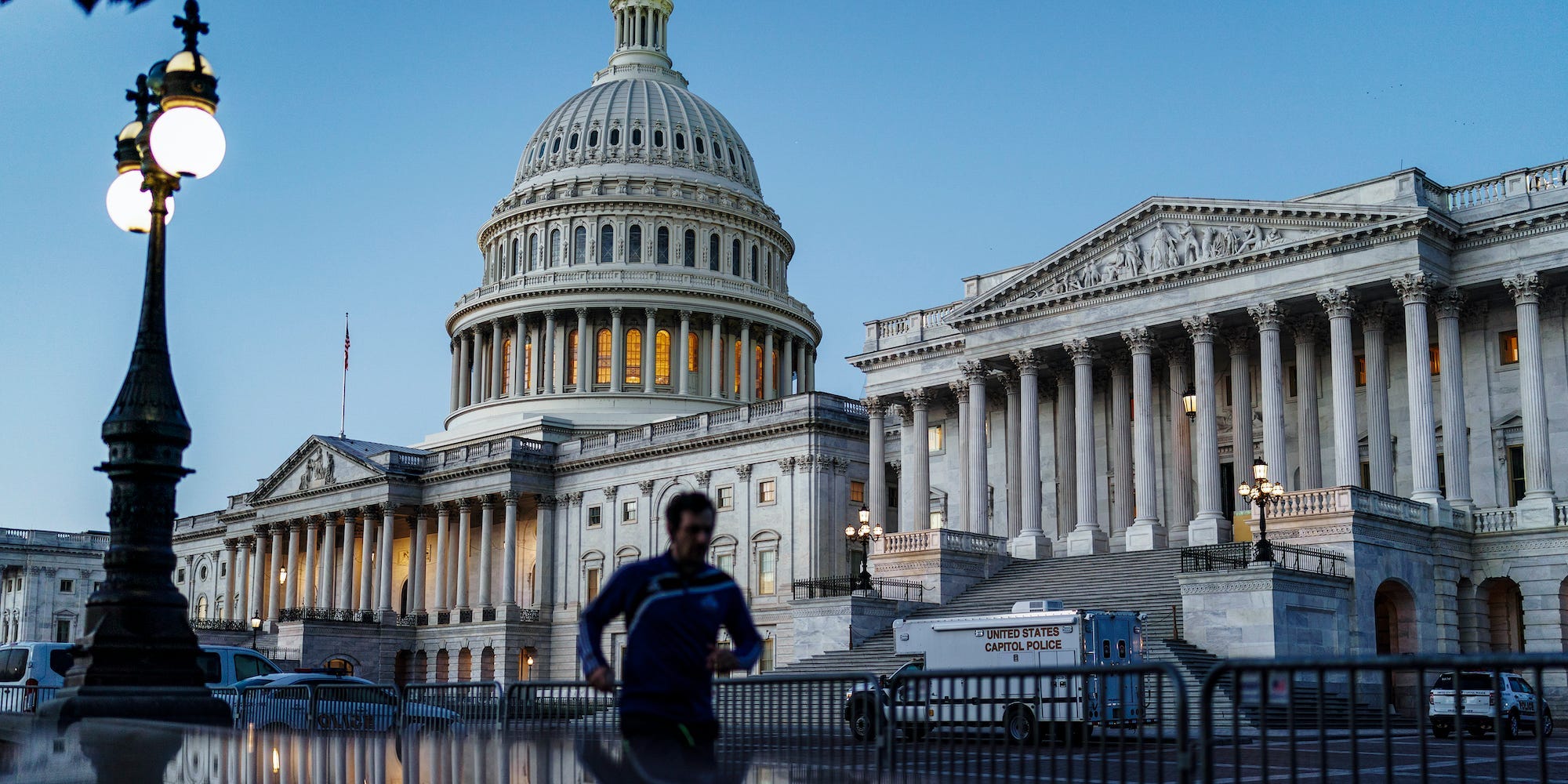
AP Photo/J. Scott Applewhite
- A new report from the CBO forecasts the federal debt to nearly double to 202% of GDP by 2051.
- The CBO sees the government’s budget deficit declining after the pandemic before rising again.
- The outlook hinges on taxing and spending laws staying the same, the CBO said.
- Visit the Business section of Insider for more stories.
The federal government’s debt pile is on track to nearly double over the next three decades, according to the nonpartisan Congressional Budget Office (CBO).
Government debt swelled over the past year as lawmakers passed stimulus bills aimed at helping Americans through the COVID-19 recession. The increased spending led federal debt to reach 100% of gross domestic product at the end of 2020.
Should current laws for taxing and spending stay the same, that share is estimated to reach 102% of GDP by the end of this year, the CBO said in its long-term outlook report. Federal debt would then reach a record-high 107% of GDP in 2031 and nearly double to 202% of GDP by 2051, the office added.
The federal budget deficit – the amount that government spending exceeds tax income – is projected to fall to 10.3% of GDP this year from 14.9%, still the second-highest level since 1945. While it will stay elevated, the shortfall will decline as as pandemic-related expenses fade, the CBO said. Deficits will total 5.7% of GDP in 2031 and soar to 13.3% by 2051, according to the report.
The report doesn’t account for the $1.9 trillion stimulus package currently making its way through the Senate. House Democrats approved the measure on Saturday, and President Joe Biden has indicated he aims to sign the bill before expanded unemployment benefits expire on March 14.
Officials including Treasury Secretary Janet Yellen and Federal Reserve Chair Jerome Powell have repeatedly sought to dispel fears that the government won't be able to finance its own debt. Near-zero interest rates ensure that, at least for now, the government's cost of borrowing remains relatively low.
Yet the recent jump in Treasury yields signals those rates could climb sooner than previously expected. After the bond market saw elevated volatility last week, investors continued dumping government bonds on Thursday, betting on new stimulus to fuel a swift recovery and stronger inflation. The Treasury market is now pulling forward expectations for a rate cut from after 2023 to sometime in 2022.
Higher rates, when coupled with surging debt, can place the government in a compromised position, the CBO said.
"A growing debt burden could increase the risk of a fiscal crisis and higher inflation as well as undermine confidence in the US dollar, making it more costly to finance public and private activity in international markets," the office added.
The CBO's report could give Republicans more firepower with which to slam Democrats' stimulus proposal. Senate Democrats advanced the bill on Thursday in a party-line vote, starting a lengthy debate process that Republicans are set to use as a roadblock for the plan's passage. Discussion will be limited to 20 hours, teeing up a final vote for the weekend after a marathon amendment process.
The gloomy debt projections also don't account for the large-scale infrastructure plan Biden aims to pass. The president has already started talks with lawmakers about a multitrillion-dollar infrastructure push that would further boost economic growth coming out of the pandemic.
If it passes, the proposal stands to give the national economy a shot in the arm - and to further increase the country's debt pile.
